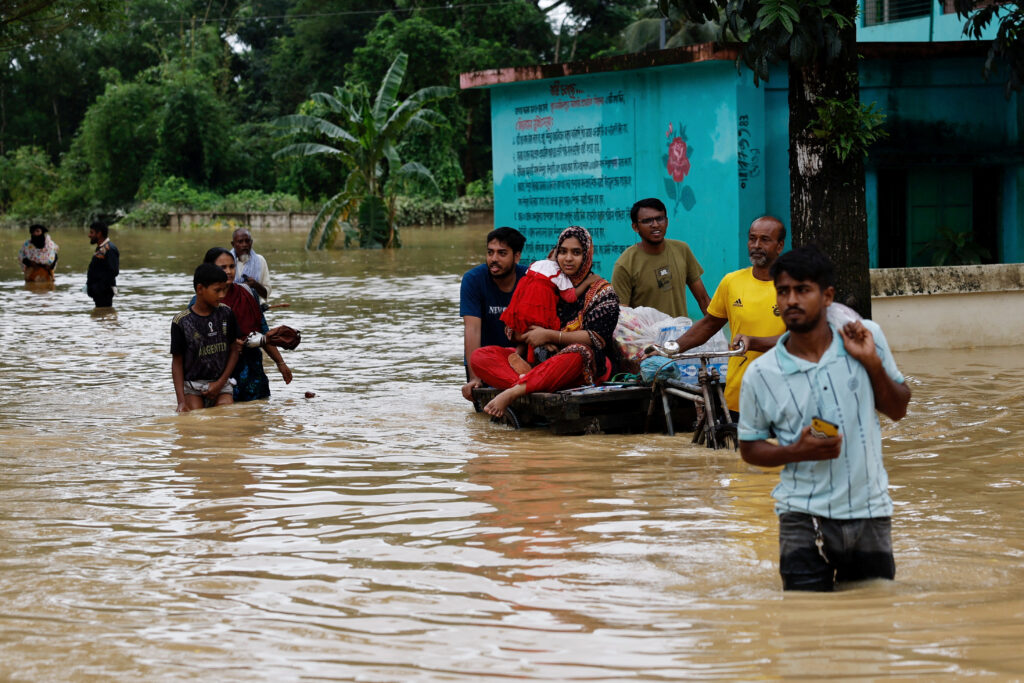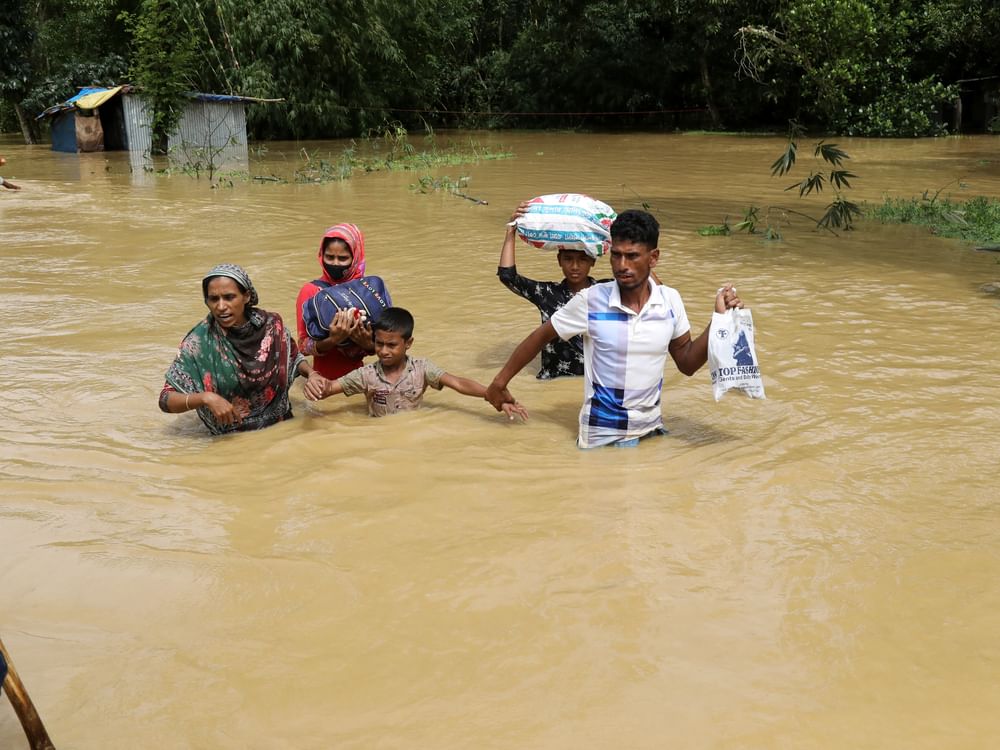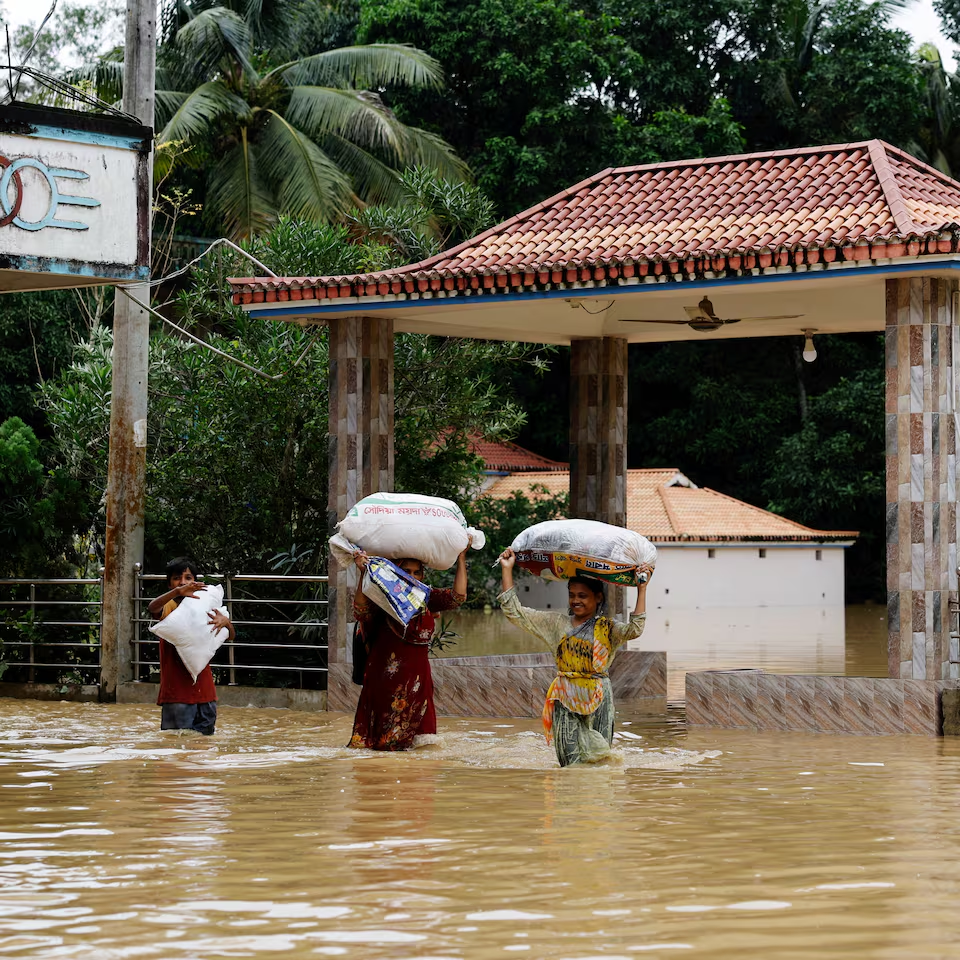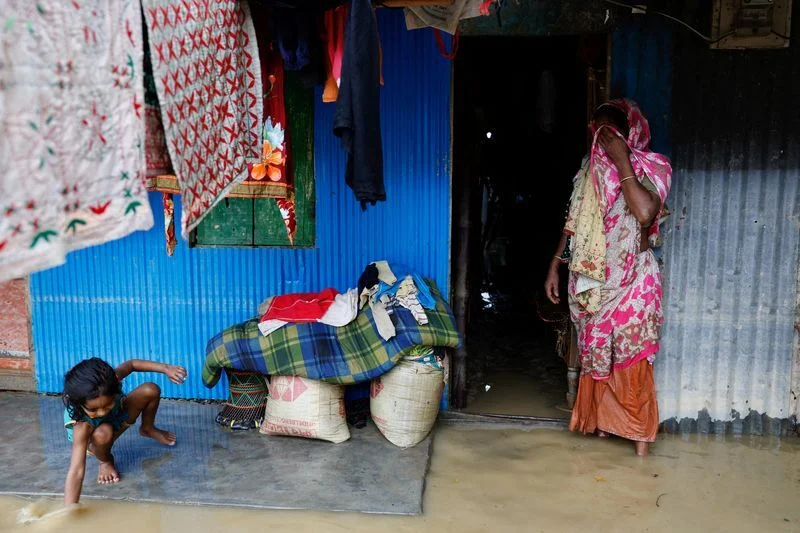The toll of Bangladesh’s devastating floods continues to rise, with officials reporting on Tuesday that the death count has reached 71. The disaster, triggered by relentless monsoon rains and runoff from upstream waterways, has left millions stranded in inundated areas across the country. As floodwaters begin to recede, authorities are grappling with a new challenge: the growing threat of waterborne diseases.

Over the past two weeks, the floods have wreaked havoc across Bangladesh, causing widespread destruction and affecting approximately five million people. The scale of the disaster is staggering, with more than 580,000 families still marooned in 11 flood-hit districts. These families are in urgent need of basic necessities, including food, clean water, medicine, and dry clothing.
In response to the crisis, a massive relief operation is underway. Nearly 500 medical teams have been deployed to provide treatment to those affected. The country’s armed forces, including the army, air force, and navy, along with the border guard, are actively assisting in relief efforts. However, the challenges remain immense.

The Directorate General of Health Services reported a alarming surge in flood-related health issues. In the past 24 hours alone, nearly 5,000 people have been hospitalized for cases of diarrhea, skin infections, and snake bites. This spike in waterborne diseases is a common and dangerous aftermath of flooding, prompting authorities to focus their efforts on disease prevention and ensuring access to clean drinking water.
The capital city, Dhaka, has not been spared from the disaster. Heavy rainfall on Tuesday submerged many districts of the city, with floodwaters reaching knee-deep to waist-high levels on roads. The inundation caused massive traffic jams as vehicles struggled to navigate through waterlogged streets, further complicating relief efforts and daily life in the bustling metropolis.

The floods have also dealt a severe blow to Bangladesh’s agricultural sector. A preliminary assessment by the agriculture ministry paints a grim picture, estimating crop damage worth 33.5 billion taka (approximately $282 million). This devastation has affected more than 1.4 million farmers, potentially leading to long-term economic repercussions for the country.
The current crisis underscores Bangladesh’s acute vulnerability to climate-related disasters. A 2015 analysis by the World Bank Institute estimated that 3.5 million people in the country were at risk of annual river flooding. Experts believe this number has likely increased in recent years due to the escalating impacts of climate change.

The United Nations Children’s Fund (UNICEF) has raised urgent concerns about the flood’s impact on Bangladesh’s youngest and most vulnerable population. According to UNICEF, two million children are at risk in what the organization describes as Bangladesh’s most severe flooding in three decades. In response, UNICEF has launched an emergency appeal for $35 million to provide essential supplies to those affected.

Emma Brigham, Deputy Representative of UNICEF Bangladesh, emphasized the long-term and recurring nature of these climate-related disasters: “Year after year, the lives of millions of children in Bangladesh are being devastated by floods, heatwaves and cyclones. Climate change is clearly altering children’s lives.” This statement highlights the urgent need for sustainable solutions and increased resilience in the face of recurring climate disasters.


